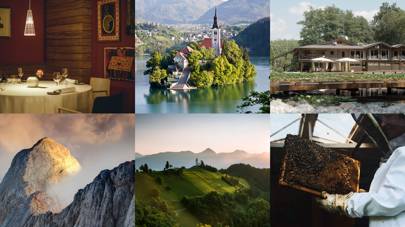2020 was the year the world took a breath and travel had to reinvent itself. Due to the colossal earth-shake of the pandemic, what’s certain is that we’re going to be travelling more thoughtfully from hereon in. But perhaps, also, more gleefully. We will appreciate every lingering orange-slice sunset; we will feel every grain as our toes sink into the sand. We’ll think harder about how our journeys affect local communities and do more research into where our money is best spent. And while the way we travel might change, what we want from our precious holidays is, and will always remain, the same.
That’s why we’ve taken great care in selecting our top holiday destinations for 2021. On the list you’ll find a geographically diverse range of trips, from eco-cool enclaves in Central America to some of the best places in Europe. As always, we’ve listened to the surfers, the architecture buffs and the foodies; we’ve considered go-slow camping spots in Australia as well as buzzy African metropolises. With events such as the Olympic Games in Tokyo being postponed to 2021, we’ve thought about how these shifts will influence the holidays we take. There are some destinations that have been on our radar for a while – Vietnam, the Caribbean – and there are those that are reckoning with their own difficult past and, as is the case with Charleston, undergoing an important process of reinvention. 2020 has been the year of the staycation and with UK breaks at an all-time high, this year we’ve included not one but three top places to visit in the UK in 2021.https://www.youtube.com/embed/CLQ8h7HeG7c
Whatever your tastes, these are some of the best holiday destinations for 2021. Of course, the options are endless, and the world will always be there for exploring (do check FCO advice and what the latest travel quarantine rules are before travelling), but this is our pick of the most-exciting spots to try and get to in 2021.
DESTINATIONSThe 8 best beaches in CreteGETTY IMAGES
That’s not to mention the parade of fresh hotels and lodges waiting to welcome international guests in 2021, which includes Kruger Shalati – a stupendously smart cabin hotel stationed on a historical railway line – as well as AndBeyond’s new supremely good-looking solar-powered Ngala Treehouse, rising above the predator-filled bush on the edges of Kruger National Park.These are the best hotels to stay at in South AfricaIncredible safari lodges in South AfricaSAFARIIncredible safari lodges in South AfricaCARRIERGETTY IMAGES
Here you’ll find locals, laid-back blow-ins and the occasional Aussie lounging salt-skinned and sipping on a cold Bintang at Mojosurf Camp, and the nearby hugger-mugger fishing village of Pancer is a great base to shack up in a homestay. Elsewhere, the hidden beach of Pantai Wedi Ireng is reachable via a short but strenuous hike, while the oft-deserted Pura Tawang Alun temple – sparsely frequented by Hindus from East Java’s Mount Bromo or across from Bali – is as good a place as any to do some solid, in-depth soul searching.GETTY IMAGES
As the capital of the North American slave trade, Charleston saw as many as 100,000 Africans – an estimated 40 percent of the people captured and brought to the USA to be sold into slavery – enter via Gadsden’s Wharf. This is where the International African American Museum will sit when it opens in 2022, after more than two decades of planning and passionate fundraising. Until then, a growing number of eye-opening tours are shining a light on the city’s challenging past, including those run by the Mcleod Plantation, which focus on the quarters where enslaved people lived, rather than the grand home that belonged to the white owners, and Gullah Tours, which provide an insight into the black history of Charleston (with the Gullah language spoken by the area’s first black residents used throughout the route).
Black-owned businesses, many of which have previously been priced out of the city, are coming to the fore more than ever, too. Especially thanks to initiatives such as Black Food Fridays launched by local entrepreneur KJ Kearney, who has also created a map of black-owned restaurants in and around Charleston. Included are soul-food mainstay Hannibal’s Kitchen, which has been serving fried shark and sautéed crab over grits for decades; the upscale Savi Cucina in Mount Pleasant; and Nigel’s Good Food, known for its low country ravioli, baked turkey wings and gravy. The city is also considering how best to rework its popular Wine and Food Festival (currently on pause), consulting with neighbourhood chefs to better tell the narrative of the region’s Gullah Geechee food traditions.GETTY IMAGES
The Makushi – present in the Rupununi region for around 7,000 years – are one set of Guyana’s nine Amerindian peoples. Eco efforts mean visitors now have the opportunity to trek through this hinterland to stay in Makushi villages and learn about the passionate conservation efforts the tribe undertakes to protect its ancestral lands. Many have created eco-lodges of their own, where you can listen out for the sound of monkeys as you bed down at night, and from which expert local guides offer explorations of the surrounding Amazon rainforest, in search of giant anteaters, river otters, monkey-eating harpy eagles and jaguars. Around 87 per cent of the country’s territory is dense rainforest where human contact is sparse. These perfectly balanced eco-systems have evolved over millennia, meaning impressive sights – such as Kaieteur Falls, the world’s largest single-drop waterfall – can be admired in their rawest forms, free from the crowds.GETTY IMAGES
Tucked between the Pacific Ocean and the Caribbean Sea, the country is home to more than six per cent of the world’s biodiversity (that’s more than the USA and Europe combined). It also produces almost 99 per cent of its electricity from renewable resources and aims to become one of the first countries to achieve zero carbon emissions by 2050. It is so unwaveringly green, in fact, that it has been recognised by the Global Sustainable Tourism Council for its muscular conservation efforts.
There are plenty of chances to get off the well-trodden track here. Pick your way through the forests of the remote Osa Peninsula, where tapirs snuffle alongside red-eyed tree frogs, armadillos and kinkajous; or visit the Guatuso Indigenous Reserve in the north, home to the country’s smallest tribe of indigenous people, the Maleku. The tribe have developed tours, hikes and sunset theatre productions to share with visitors, and will gladly guide guests through their land, sharing knowledge of medicinal plants and native wildlife, from bright-billed toucans to rambunctious monkeys. Hammerheads, white-tips and bull sharks can be spotted in the surrounding seas, or you can kayak the sultry mangroves, binoculars in hand, in search of wily caimans and sleepy sloths in the low-hanging branches. Nayara Tented Camp, which opened late last year, is surrounded by hills that act as a sloth refuge, while long-standing eco-lodges Pacuare and Lapa Rios run pioneering jaguar conservation efforts and host Future Lab stations, where visiting researchers and interns share their jungle knowledge with guests.GETTY IMAGES
The 16 inhabited islands, which are all closer to Bergen than Inverness, are lashed by waters that teem with mackerel, haddock, mussels, velvet crabs and lobsters – a bounty that is duly hauled in and served up at Lerwick’s trendiest establishments. Alongside fluffy bannocks and Reestit mutton soup, you’ll find pickled herring and plump scallops – plus tennis-ball-sized Scotch eggs – at The Dowry. Scattered across the archipelago, resourceful islanders are making the most of their own smallholdings too, growing previously unavailable crops, from trophy-sized ears of sweetcorn to grapes and tomatoes, or rearing hearty heritage boars and selling the spoils to local chefs.
But it’s not all about the food. In 2021, the elemental isles will play host to the UK’s most northerly folk festival (locals expect not to sleep for the duration of the festivities). And 2021 is anticipated to be a boom year for citizen science, with many expected to take part in Whale and Dolphin Conservation’s beefed-up Shorewatch scheme, which encourages locals and visitors to help monitor at-risk species, including the squadrons of mammal-eating orca that patrol these northern waters in the summer.Read our insider’s guide to Shetland, ScotlandAn insider’s guide to Shetland, Scotland’s wild and captivating islandsDESTINATIONSAn insider’s guide to Shetland, Scotland’s wild and captivating islandsGETTY IMAGES
Aspirational railway travel is also steaming into South-central Vietnam in 2021, with the launch of a boutique 12-seater carriage on a daily return route between Da Nang and Quy Nhon. The wood- and marble-strewn Vietage train has been developed by high-end hotel group Anantara to serve guests riding between its luxe outposts in both cities. Trundling through peaceful rice fields and winding along jagged coastlines that jut out as if they were broken teeth, the train offers free-flowing wine, a three-course supper and spa treatments.
But as well as the country’s more lustrous offerings, community-based tourism is finding its feet here, too. In the pristine Ngoc Son Ngo Luong nature reserve – sometimes described as Jurassic Park without the dinosaurs – local operators are working alongside a Spanish NGO to bring in conservation funds and valuable work for isolated Muong villagers. As a result, visitor numbers are increasing by 45 per cent year-on-year and rates of illegal logging and poaching have decreased by 90 per cent since 2011.
Discover the best time to visit VietnamThe best time to visit VietnamDESTINATIONSThe best time to visit VietnamGETTY IMAGES / FREDERIK WISSINK FOR ZANNIER HOTELS
The former industrial cotton-mill city of North Adams is quickly settling into its new creative identity. Home to a sparky food scene, cool new places to stay and art establishments such as Mass MoCA, it also has plans for museums by Frank Gehry and Jean Nouvel, a 110-room hotel, a craft distillery and a wave of exciting new restaurants. In nearby Williamstown, you’ll find The Clark Art Institute, where classic Renaissance pieces rub up against outré modern sculptures. One of the coolest places to stay in North Adams is Tourists, a mid-century motor lodge turned contemporary rustic-chic hotel, with a restaurant serving up food inspired by Native American, Welsh, Italian and Lebanese cultures. Just out of town, life has been breathed back into Greylock Works, a former mill now hosting yoga classes, farmers’ markets and DJs, with a hotel to come.GETTY IMAGES / GENEVIEVE HUBA / R’EL DADE / MARCUS LLOYD / JEFF-GOLDBERG /PETER CROSBY
From the rippling hills of the wild South Downs to the cobblestone streets of storied Rye, these two charming Sussex counties glint with the kind of natural beauty that delivers an endless cache of serenity and soul-soaring sea views. But now, a raft of new openings and developments are making this pretty part of the UK an even bigger draw.
In Brighton, the newest seafront Soho House looks set to unlock its doors on Madeira Place – although exact dates are yet to be confirmed – while Sea Lanes, the UK’s first national open-water swimming centre of excellence will transform the former Peter Pan site on Madeira Drive in spring 2021. In West Sussex, classy Ashling Park will open luxury lodges – made from natural materials including wood from the South Downs National Park – and a helipad among its award-winning sparkling-wine vineyards. Nearby, the latest outpost of the nooks-and-cooks Pig hotels – the eighth in the litter – will launch, complete with its own vines, in the South Downs in summer 2021.
Beyond that, landmark creative project Waterfronts will herald a new way to experience the stirring coastline between the South Downs and the Thames Estuary. The big-budget collaboration between England’s Creative Coast and some of the region’s most exciting galleries will see seven site-specific art commissions explore the borders between land and water. The world’s first art geocache trail will also work with a group of locals to lead visitors on a GeoTour through the enlivening, salt-cloaked landscape of the south-east coast.Read our guide to the medieval seaside town of RyeRye: The medieval seaside town getting a thoroughly modern updateDESTINATIONSRye: The medieval seaside town getting a thoroughly modern updateGETTY IMAGES
The newest art museum Amos Rex – pooling like molten silver below the functionalist Lasipalatsi – is a place where art and urban culture combine; while the long-standing Kiasma contemporary art wing of the Finnish National Gallery (once considered inelegant, now alluring) hosts cutting-edge exhibitions, showcasing the work of Finnish, Nordic and international artists. As part of a further 10-year plan, the coal-fired Hanasaari B power plant will be transformed into a large-scale cultural hub in 2024 (we’re getting Tate Modern vibes), attracting some of the world’s most exciting artists.
Elsewhere, there are bracing sea pools on the far reaches of the South Harbour (summer concerts are staged behind the pavilion) and a raft of alternative, outdoor museums, including the forest-filled island of Seurasaari, in Helsinki’s inner archipelago. Traditional celebrations are rolled out here come Midsummer and the UNESCO World Heritage-listed Suomenlinna sea fortress shoulders cafés, restaurants and a brilliant little microbrewery.GETTY IMAGES / TUOMAS UUSHEIMO
Each felled tree and forest fire affects the communities who call this place home and while it might seem an understandable reaction to stay away, studies have shown that, when done well, eco-tourism is the most profitable long-term strategy for providing sustainable employment for locals and protecting the jungle and its fantastical flora and fauna.
An adventure here means bedding down on local house boats, camping in the tangled, dew-soaked jungle, and visiting community schools and indigenous villages. That’s not to mention the huge amount of wildlife to be spotted, from rare pink dolphins to jaguars and chattering spider monkeys swooping through the tree canopy. Eco-lodges abound in the rainforest and new offerings for 2021 include Aqua Nera, the river-cruise outfit’s latest boat, which will glide along the piranha-filled Peruvian Amazon. Visit during the wet season (February to May), when waterway navigation is easier and you’ll find the riverbanks populated with migratory birds, while mating season brings the surrounding greenery alive with a cacophony of courtship sounds.GETTY IMAGES
This hasn’t gone unnoticed. Dior’s most recent menswear collaboration – sure to become one of the most talked-about collections of the spring-summer 2021 season – involves a partnership with Ghanaian painter Amoako Boafo. Seduced by the same swagger, a design-savvy crew has started to suss out Accra too. You’ll find them browsing the seafront Artists Alliance or Gallery 1957 for dazzling contemporary West African artwork. They can also be spotted eating whisky-marinated kushiyaki at Santoku, or gathering at ‘spots’ in Jamestown to nibble on kelewele (deep-fried plantain). In the evenings they’ll have bagged a table at Midunu’s forward-thinking Nomadic Dining supper club, run by innovative chef Selassie Atadika. The pop-ups – which have taken Atadika’s fusion food everywhere from Cape Town’s Design Indaba festival to banquets in Hong Kong – are held every quarter in secret locations around the capital. Each dish is inspired by Atadika’s extensive travels around the continent, with a focus on seasonal ingredients and sustainability. Expect to find grains such as sorghum and millet on the menu, alongside imaginative offal and fine seafood, all executed with the boldness that encompasses this increasingly exciting city.GETTY IMAGES / COURTESY OF MIDUNU
Clinging to the far north-western reaches of Australia, the Kimberley is a sparsely settled place where the dust glows blood-red and aquamarine seas are teeming with sharks and saltwater crocodiles. Vast landscapes make this one of the most enticing adventure spots for 2021 – the region is almost three times the size of England, with fewer people per square metre than almost any other place on earth. Whether you’re heli-hiking to uncover ancient rock art, driving along the winding Gibb River Road or being pummelled by the waters of the mighty Horizontal Falls, marvel at the fact that these stirring landscapes have been well-trodden by Australia’s First Peoples for tens of thousands of years.
After a season’s break, the rejuvenated remote-luxe outpost of El Questro Homestead will be reopening in 2021, while Western Australia’s ongoing Camping with Custodians project sees Aboriginal communities operate campgrounds, art galleries and guided tours on their own land. Elsewhere, the Dampier Peninsula – an isolated triangle of pindan piercing the Indian Ocean – offers a glut of go-slow campsites, including Kooljaman at Cape Leveque, an indigenous-owned spot perched atop crimson cliffs that jut into the Indian Ocean. A bumpy lurch south on unsealed roads takes you to Broome, an old pearling hub turned hip beach town. Here, the new Moontide Distillery makes the most of the monsoon rains that thunder down like cannon fire during the wet season, as well as local botanicals and its wonder ingredient, the gubinge fruit. At nearby Gantheaume Point, you’ll find rare snub-fin dolphins in the surf and a smattering of 130-million-year-old dinosaur footprints preserved in the amber-reef rock. And between March and early November, The Staircase to the Moon is an astonishing sight: the natural phenomenon occurs when the gleaming full moon casts a laddered pattern on the rippling mud flats of Roebuck Bay.Discover more of Australia with these awe-inspiring photosThe most awe-inspiring photos of AustraliaPHOTOGRAPHYThe most awe-inspiring photos of Australia
La Palma, the most north-westerly island, has a clutch of Renaissance palaces, charming churches and a stone town hall made out of volcanic rock. But it’s the meandering coastal roads – passing expansive calderas and swaying forests of banana – as well as its quaint pitch-roofed houses of pinky-purple, mint green, azure and ochre that leave a lasting impression. Lesser known, and therefore the island we’re most excited about, is El Hierro. A windswept idyll of Atlantic wildness – it is set to become the world’s first sustainable and self-sufficient island, ploughing eco-efforts into everything from energy to food. The mountainous terrain, which feels more like the Scottish Hebrides than anything Spanish (bar the climate), bristles with cacti and ‘living fossil’ trees, and 90 per cent of its coastline is made up of towering tar-black volcanic cliffs. Luxury here comes not in the form of flashy hotels, but of wide, open, unspoilt landscapes and tiny paradores serving up delectable small plates. Both islands are biosphere reserves (La Palma is home to subtropical forests), meaning large swaths are strictly protected. But this makes them a haven for birdwatchers, botanists and hikers, who come for El Hierros’ Bimbape rock carvings and the intense elevations of the Camino de Jinama trails.Visiting El Hierro: the Spanish island you’ve probably never heard ofVisiting El Hierro: the Spanish island you’ve probably never heard ofINSPIRATIONVisiting El Hierro: the Spanish island you’ve probably never heard ofGETTY IMAGES
But as the city is busy flexing its organisational prowess, a whole host of design destinations are cropping up in the surrounding UAE. From brutalist hotels to minimalist converted clinics, these cafés, hotels and art sites are a far cry from the usual opulence of the Emirates. In Dubai itself, the understated Jameel Arts Centre takes its inspiration from traditional Sha’abi houses, while the exterior of multidisciplinary event space Concrete, tucked into the Al Quoz creative hub, has been dressed in polycarbonate cladding and glass and mirror aggregates, and Form Hotel, located in the Al Jaddaf neighbourhood, is as pared back as possible. Finally, the ME Dubai hotel, which has the appearance of a gigantic misshapen cube, opened in March 2020 and is the only hotel anywhere to have both its architecture and interiors designed by late visionary Zaha Hadid. In Sharjah, the Sharjah Art Foundation is a clustered mix of historic Emirati architecture, modern skylights and glass façades, while clean-line concrete and gleaming glass shelter Random International’s magnificent Rain Room installation on a low-key city street. But it’s the Maliha desert’s strikingly simple Al Faya Lodge, a five-room boutique hotel and saltwater spa on an old petrol-pumping site, that is really setting the bar for the emerging sleek aesthetic, with locally sourced stone allowing it to hunker unassumingly in the stark surrounding of rugged mountains and sand.GETTY IMAGES / COURTESY ART JAMEEL, PHOTO BY MOHAMED SOMJI / PHOTO BY ARCHITECTURAL PHOTOGRAPHER BENO SARADZIC / AL WASL PLAZA
But while the cool crowd is already testing the waters – famous homeowners in the area include Philippe Starck – the area remains blissfully unshowy: you’ll still find locals passing the time with syrup-slow card games. Think of Melides as Joshua Tree or Byron Bay before anyone else caught on; a remote creative haven untrammelled by travellers.
That said, there is some development here – Christian Louboutin is currently building a boutique hideout near the centre. Until then, pop into the butcher’s to pick up a roast chicken for lunch, then spend the afternoon dipping your toes in the waters at Praia da Galé, a stretch of beach with natural sandstone sculptures, a few snack shacks and lolling lifeguards, and not much else.GETTY IMAGES
But it’s the highly anticipated, who-knows-when-it-will-happen, development of Bretton Hall at Yorkshire Sculpture Park that has everyone in a tizzy. Overseen by art juggernauts Hauser & Wirth, the hotel project will add to their pioneering galleries in Hong Kong, London, New York, Somerset and beyond. If the sumptuous arts-and-crafts vibe of the dazzling Fife Arms in Braemar is anything to go by, this is sure to put Yorkshire on the international map.Read our list of the coolest places to visit in Yorkshire right nowThe coolest places to visit in YorkshireDESTINATIONSThe coolest places to visit in YorkshireGETTY IMAGES / COURTESY OF YORKSHIRE SCULPTURE PARK BY JONTY WILDE
Source: cntraveller.com



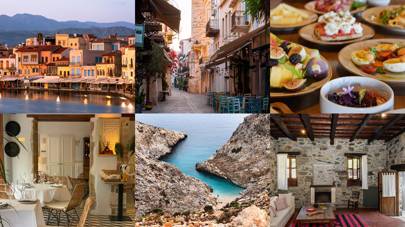
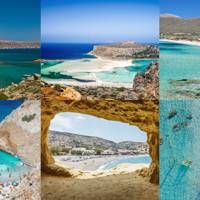 DESTINATIONSThe 8 best beaches in CreteGETTY IMAGES
DESTINATIONSThe 8 best beaches in CreteGETTY IMAGES
 SAFARIIncredible safari lodges in South AfricaCARRIERGETTY IMAGES
SAFARIIncredible safari lodges in South AfricaCARRIERGETTY IMAGES

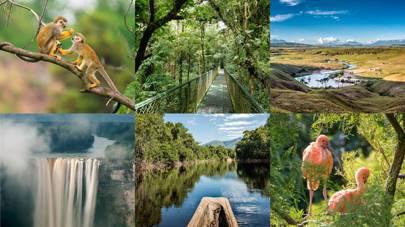


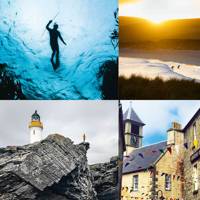 DESTINATIONSAn insider’s guide to Shetland, Scotland’s wild and captivating islandsGETTY IMAGES
DESTINATIONSAn insider’s guide to Shetland, Scotland’s wild and captivating islandsGETTY IMAGES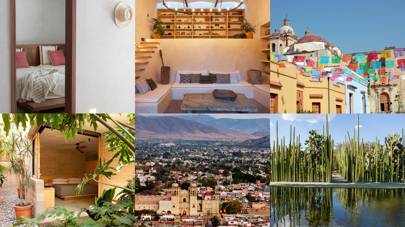
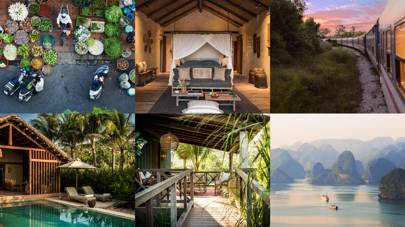
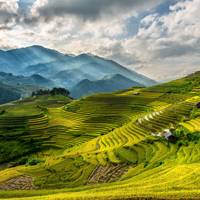 DESTINATIONSThe best time to visit VietnamGETTY IMAGES / FREDERIK WISSINK FOR ZANNIER HOTELS
DESTINATIONSThe best time to visit VietnamGETTY IMAGES / FREDERIK WISSINK FOR ZANNIER HOTELS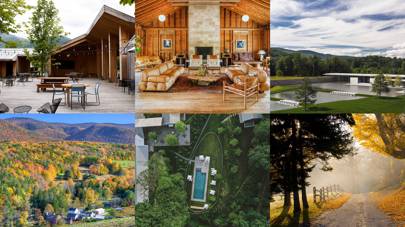

 DESTINATIONSRye: The medieval seaside town getting a thoroughly modern updateGETTY IMAGES
DESTINATIONSRye: The medieval seaside town getting a thoroughly modern updateGETTY IMAGES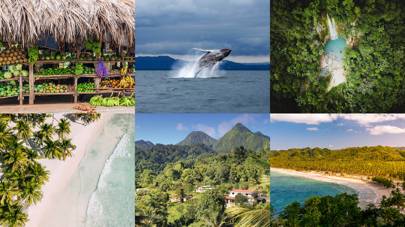


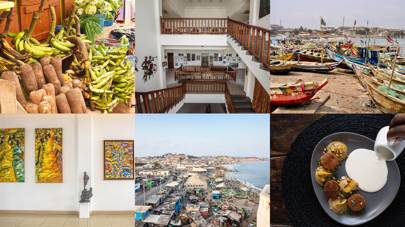
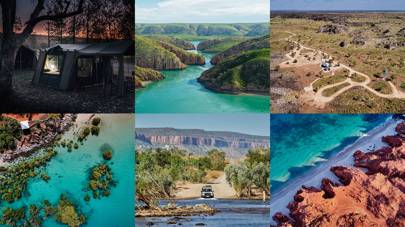
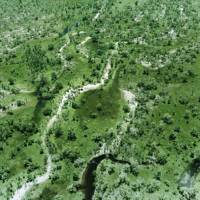 PHOTOGRAPHYThe most awe-inspiring photos of Australia
PHOTOGRAPHYThe most awe-inspiring photos of Australia
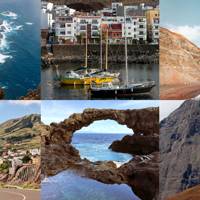 INSPIRATIONVisiting El Hierro: the Spanish island you’ve probably never heard ofGETTY IMAGES
INSPIRATIONVisiting El Hierro: the Spanish island you’ve probably never heard ofGETTY IMAGES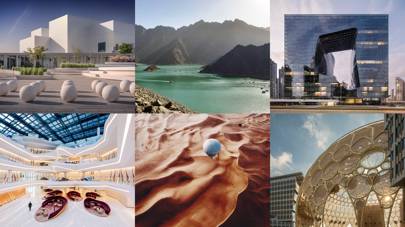
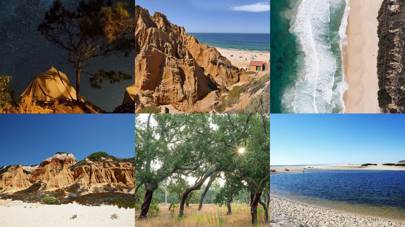
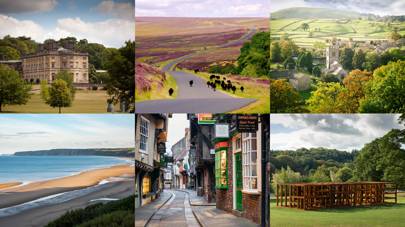
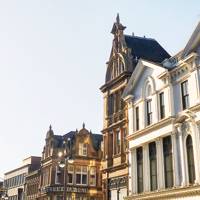 DESTINATIONSThe coolest places to visit in YorkshireGETTY IMAGES / COURTESY OF YORKSHIRE SCULPTURE PARK BY JONTY WILDE
DESTINATIONSThe coolest places to visit in YorkshireGETTY IMAGES / COURTESY OF YORKSHIRE SCULPTURE PARK BY JONTY WILDE